How Does the Horizontal Orbital Stretch Wrapper Work?
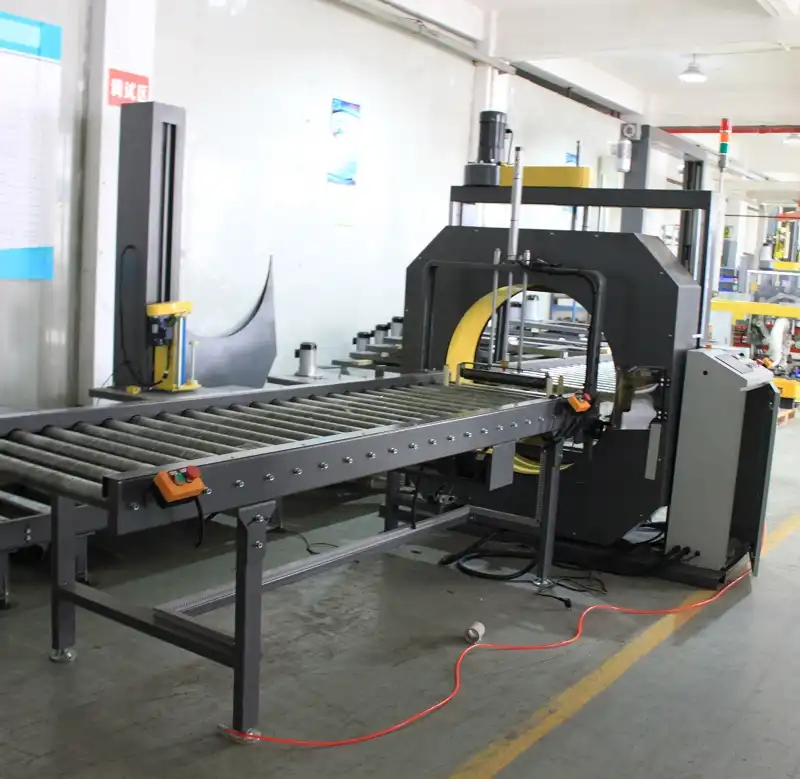
In today’s demanding industrial environments, optimizing packaging processes for shipping is crucial for operational efficiency and product integrity. The horizontal orbital stretch wrapper stands out as a highly effective solution for packaging items, especially those characterized by length or irregular shapes. Its distinctive orbital wrapping mechanism ensures secure load containment rapidly, translating to significant savings in labor and material consumption.
This automated packaging system has become indispensable across various sectors, including manufacturing, logistics, building materials, and metal fabrication, where products like pipes, extrusions, lumber, doors, windows, and rolled goods require robust protection against handling and transit damage. Understanding the operational mechanics of this high-performance machine is key to leveraging its full potential. This guide details the working principles, core components, operational process, and key benefits of the horizontal orbital stretch wrapper, offering a comprehensive overview for informed decision-making.
1. Understanding the Fundamentals of Horizontal Orbital Stretch Wrapping
A horizontal orbital stretch wrapper is an automated packaging machine engineered to encase products in stretch film, preparing them securely for transport or storage. Diverging from traditional turntable or rotary arm wrappers that primarily handle palletized loads vertically, orbital wrappers apply film horizontally as the product passes through a rotating ring. This method is particularly advantageous for effectively wrapping long, bulky, or awkwardly shaped items that pose challenges for manual wrapping or other automated systems.
A. Core Operational Principle
The machine operates by conveying the product horizontally through a rotating ring assembly. Mounted on this ring is a carriage holding a roll of stretch film. As the ring orbits the stationary or moving product, the film is dispensed and wrapped securely around its profile. This ensures consistent tension and complete coverage along the product's length.
B. Superior Handling of Non-Uniform Products
A primary strength of horizontal orbital wrappers lies in their proficiency with products of irregular shapes and profiles. From long, flat items like lumber stacks and panels to cylindrical objects such as pipes, tubes, and rolls, the machine adapts to provide a tight, protective wrap, significantly minimizing the risk of damage and improving load stability.
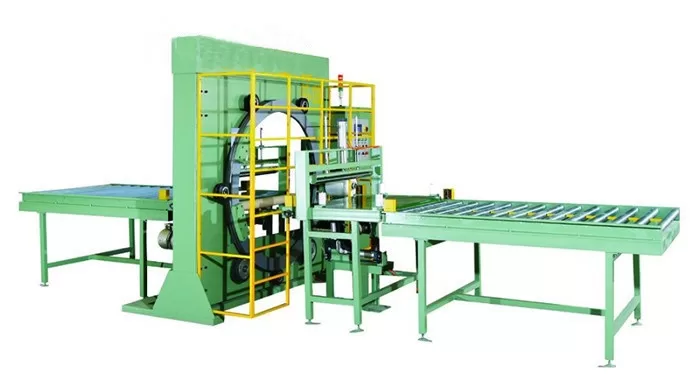
2. Key Components of a Horizontal Orbital Wrapper System
Comprehending the function of a horizontal orbital wrapper involves familiarity with its critical components. Each element contributes synergistically to the machine's efficient and reliable wrapping performance.
A. Rotating Ring Assembly
The rotating ring is the central mechanism. It orbits perpendicularly to the product flow, carrying the film dispenser. The rotational speed of the ring is typically adjustable, allowing optimization based on product dimensions, desired wrap overlap, and required throughput.
B. Film Carriage and Tension Control System
The film carriage, mounted on the rotating ring, holds the stretch film roll. It incorporates a tension control system, often featuring pre-stretch capabilities (stretching the film before application). This precise control ensures the film is applied with optimal force—tight enough for secure load containment but gentle enough to prevent product damage. Modern systems often use electronic feedback for consistent tension.
C. Infeed and Outfeed Conveyor System
The conveyor system facilitates the movement of products through the wrapping zone. This usually consists of powered roller or belt conveyors. The conveyor speed is carefully synchronized with the ring's rotation speed to guarantee uniform film application and consistent overlap along the entire length of the product.
D. Clamping, Cutting, and Wiping System
Automated systems include mechanisms to clamp the leading edge of the film at the start of the cycle and to cut and wipe down the trailing edge at the end. This ensures a fully automated process without manual intervention for film attachment or detachment, enhancing speed and safety.
3. The Horizontal Orbital Wrapping Process Explained
The wrapping cycle is an orchestrated sequence designed for maximum efficiency. It commences when the product enters the machine on the infeed conveyor and advances towards the rotating ring.
A. Cycle Initiation and Film Application
As the leading edge of the product reaches the wrapping zone, sensors trigger the cycle. The machine automatically clamps the stretch film onto the product or initiates the wrap. The ring then begins its rotation, dispensing and applying the film around the product's cross-section as it is conveyed through the ring.
B. Continuous Wrapping and Film Overlap
While the ring rotates continuously, the conveyor transports the product steadily forward. The synchronization between ring speed and conveyor speed determines the amount of film overlap, ensuring complete and uniform coverage. Multiple layers can be applied by adjusting these parameters or program settings for enhanced protection and load stability.
C. Cycle Completion: Cutting and Sealing
Once the trailing edge of the product clears the wrapping zone, the machine automatically cuts the film and wipes the tail end against the wrapped product, ensuring a secure finish without loose ends. The fully wrapped product then exits the machine via the outfeed conveyor.
4. Advantages of Employing Horizontal Orbital Stretch Wrappers
The adoption of horizontal orbital stretch wrappers offers substantial benefits compared to manual methods or less specialized automated equipment, enhancing packaging efficiency, product protection, and operational cost-effectiveness.
A. Enhanced Throughput and Speed
A key advantage is the significant increase in wrapping speed. The automated operation of the rotating ring and integrated conveyor system allows products to be wrapped in seconds, drastically reducing packaging time compared to manual labor. This directly boosts operational throughput, crucial for high-volume production lines.
B. Consistent and Superior Wrap Quality
Manual wrapping often leads to inconsistent film tension and coverage. Orbital wrappers deliver uniform tension and precise overlap across the entire product length. This consistent quality improves load containment, enhances package appearance, and reliably minimizes the risk of damage during handling and shipping.
C. Reduced Labor Costs and Material Savings
Automation significantly reduces the need for manual labor in the wrapping process, freeing up personnel for other tasks and lowering labor costs. Furthermore, features like film pre-stretching can optimize film usage, leading to considerable savings on consumable materials compared to manual wrapping.
5. Adapting the Machine for Diverse Product Dimensions
A major strength of horizontal orbital wrappers is their flexibility in accommodating a wide range of product sizes. Various machine parameters can be adjusted to suit products with different lengths, widths, and cross-sectional profiles.
A. Ring Diameter Options
Manufacturers offer horizontal orbital wrappers with various ring diameter options. Selecting the appropriate ring size is crucial; it must be large enough to encircle the largest product cross-section comfortably. Smaller rings are suited for compact items, while larger diameters accommodate bulky products like large bundles of timber or wide panels.
B. Adjustable Conveyor Speed and Ring Speed
The conveyor speed and ring rotation speed are typically adjustable. Slower conveyor speeds relative to ring speed result in greater film overlap, suitable for heavy items or those requiring maximum protection. Conversely, faster conveyor speeds increase throughput for lighter, more durable products requiring standard coverage.
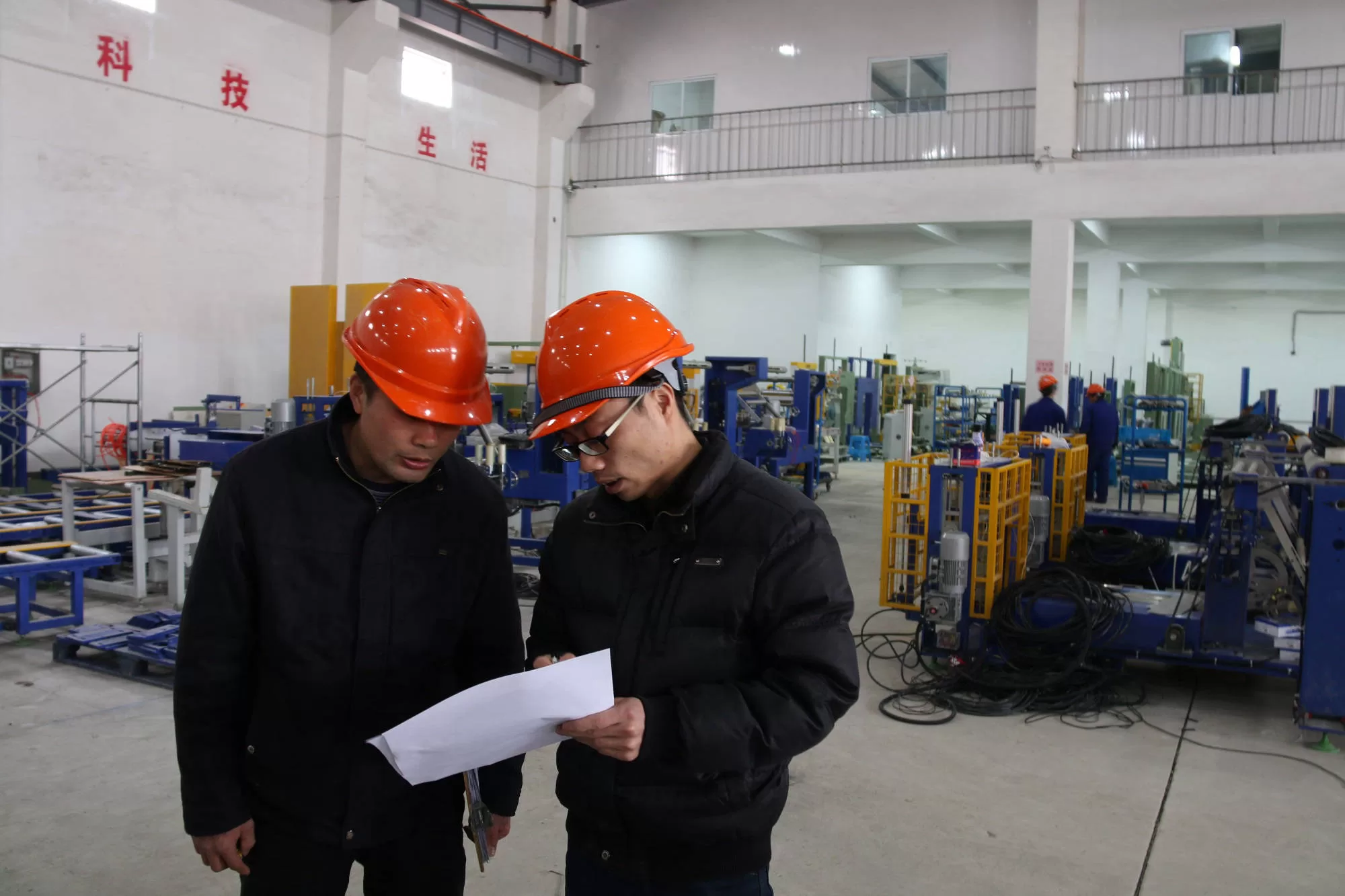
Get Your Best Solution !
6. Customizing Film Tension and Wrap Parameters
Achieving optimal load containment hinges on precise control over stretch film tension and other wrapping parameters. This is vital when handling delicate items or products needing high levels of security during transit.
A. Advanced Tension Control Systems
Modern orbital wrappers incorporate sophisticated tension control mechanisms, often utilizing electronic sensors and controls or powered pre-stretch units. These systems allow operators to precisely set and maintain the desired film tension throughout the wrap cycle, ensuring optimal load security without crushing or damaging the product.
B. Programmable Wrap Configurations
Many machines feature programmable logic controllers (PLCs) that allow operators to save specific wrap recipes for different products. This includes parameters like the number of wraps at the leading and trailing ends, film overlap percentage (controlled by ring/conveyor speed ratio), and tension levels. This ensures repeatability and optimizes the wrap for each specific product type.
7. Safety Features Integrated into Horizontal Orbital Wrappers
As with all industrial machinery, operator safety is paramount in the design and operation of horizontal orbital stretch wrappers. Manufacturers incorporate multiple safety features to protect personnel during operation.
A. Emergency Stop Circuitry
Strategically located emergency stop buttons are a standard feature. Activating an E-stop immediately halts all machine movement, preventing accidents or mitigating issues during the wrapping process.
B. Physical Guarding and Safety Interlocks
Moving components, particularly the rotating ring assembly, are typically enclosed within protective guarding. Access doors or gates are equipped with safety interlocks that automatically stop the machine if opened during operation, preventing contact with moving parts.
C. Light Curtains and Area Scanners
Advanced safety options may include light curtains or area scanners around the machine's perimeter. These devices detect personnel intrusion into hazardous zones and trigger an immediate machine stop, providing an additional layer of protection.
8. Diverse Industry Applications for Horizontal Orbital Wrappers
The adaptability and efficiency of orbital stretch wrappers make them valuable assets across a multitude of industries requiring secure packaging for elongated or irregular products.
A. Building Materials and Construction
In the construction and building materials sector, these wrappers are commonly used for packaging long items like PVC or metal pipes, timber bundles, aluminum extrusions, doors, and windows. The wrap protects against dirt, moisture, and scratches during storage and transport.
B. Manufacturing, Metals, and Automotive
Manufacturing facilities utilize orbital wrappers for diverse products, including furniture components, assembled goods, and large parts. In the metals industry, they wrap coils, bars, and fabricated sections. The automotive sector uses them for packaging components like exhaust systems or body panels requiring surface protection.
C. Textiles, Flooring, and Paper Industries
Industries dealing with rolled goods, such as textiles, carpets, vinyl flooring, and paper rolls, benefit significantly from orbital wrapping. It provides a tight, protective layer that prevents unraveling and contamination.
9. Addressing Common Operational Challenges
While horizontal orbital stretch wrappers offer high efficiency, operators might encounter certain operational challenges. Awareness and proper procedures can effectively mitigate these issues.
A. Film Breakage Issues
Occasional film breakage can interrupt the process. Common causes include excessive tension settings for the film type, poor quality or damaged film rolls, or sharp edges on the product. Solution involves selecting appropriate high-quality film, verifying correct tension settings, and potentially adding protective materials (like corner boards) for sharp products.
B. Inconsistent Wrapping or Product Shifting
Lightweight or unstable products might experience shifting during wrapping, leading to inconsistent results. This can often be resolved by optimizing conveyor speed, ensuring proper product placement and guidance on the conveyor, and potentially using top pressure pads or side guides for stabilization.
C. Maintenance Neglect Leading to Malfunctions
Failure to adhere to recommended maintenance schedules can lead to component wear, misalignment, and unexpected breakdowns. Regular preventative maintenance is crucial for sustained reliability.

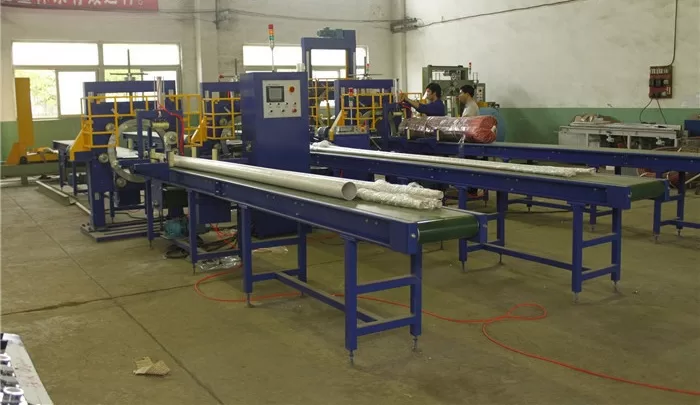
10. Essential Maintenance and Troubleshooting Practices
Consistent performance and longevity of a horizontal orbital stretch wrapper depend heavily on diligent preventive maintenance and effective troubleshooting.
A. Routine Cleaning and Inspection
Regular cleaning is fundamental. Dust, debris, and film fragments can accumulate on sensors, moving parts, and rollers, impairing function. Frequent inspection of belts, chains, rollers, and safety devices helps identify potential issues early.
B. Lubrication and Component Replacement Schedule
Adhering to the manufacturer's recommended schedule for lubricating moving parts (like bearings and chains) is critical. Worn components, such as cutting blades, drive belts, or rollers, should be replaced proactively based on usage and inspection findings to prevent major failures and ensure optimal performance.
C. Basic Troubleshooting Guide
Operators should be trained on basic troubleshooting steps for common issues like film breaks, sensor faults, or inconsistent wraps, often detailed in the machine's manual. Knowing how to address minor problems quickly minimizes downtime.
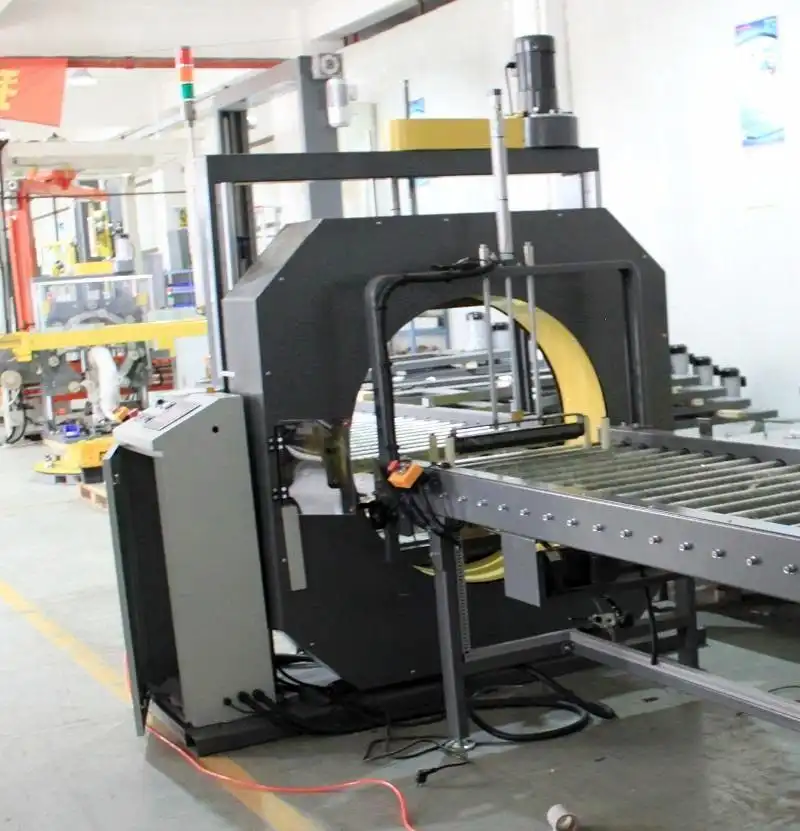
Conclusion: Leveraging the Efficiency and Versatility of Horizontal Orbital Stretch Wrappers
The horizontal orbital stretch wrapper represents a significant technological advancement in packaging automation, offering an invaluable solution for businesses needing to wrap long, bulky, or irregularly shaped products efficiently and securely. Its capacity to handle diverse product geometries, dimensions, and weights underscores its versatility across numerous industries.
By understanding the core operating principles, key components, adjustment capabilities, and potential challenges associated with these machines, companies can strategically integrate orbital wrapping technology into their operations. Proper machine selection, configuration, operator training, and consistent maintenance are key to maximizing the benefits—enhanced throughput, reduced labor and material costs, improved product protection, and overall greater packaging efficiency—ensuring years of reliable service and a strong return on investment.

Get Your Best Solution !